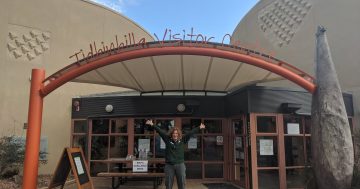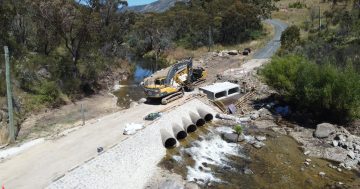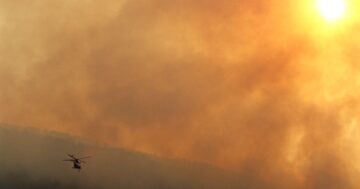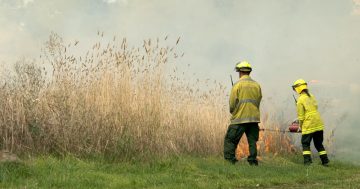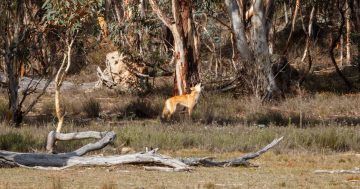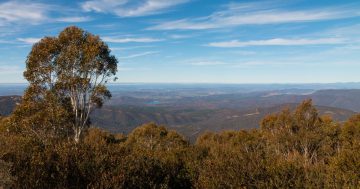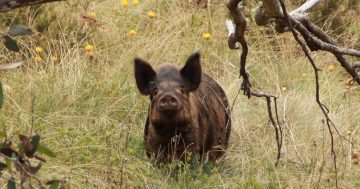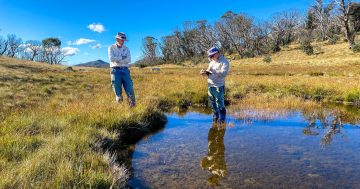
The Orroral Valley fire burnt 80 per cent of Namadgi National Park. Photo: Gary Hooker ACT RFS via ESA Twitter.
Governments must resist ”kneejerk” calls for more prescribed burning in national parks like Namadgi in the wake of this summer’s extreme bushfire season, according to Canberra naturalist Ian Fraser.
Mr Fraser, who in 2003 was invited by government to report on the fire damage and recovery in Namadgi National Park and Tidbinbilla Nature Reserve before they reopened to the public, said that with conditions so dry from the drought there was nothing anybody could have done to stop the Orroral Valley blaze that eventually burnt 80 per cent of the park.
“We need to resist kneejerk reactions from people who are not ecologists or land managers, who are seizing on what they think is a quick fix without understanding it,” Mr Fraser said.
“What we are told by everyone from firefighters to ecologists in a situation like we had with that degree of drought and aridity, is that there was nothing that anyone could have done to stop the fire.
“Once a fire gets going in those conditions it wouldn’t matter if you’d burnt the place two to three years earlier. It would have still burnt through the way it did. It just goes through the canopy and you can’t burn that all the time.”
Mr Fraser said that you could technically remove all the vegetation from a national park so it did not burn but then ”it’s no longer a national park, nor is it a water catchment”.
He said a key difference between the recent fires and 2003 is how much drier the park was, so while the winds were not as strong, areas were exploding, even at night.
With recent rain the long recovery process will have already started but government will need to help it along by keeping an eye on badly burnt slopes and introduce erosion controls where possible to protect the water supply.
The other crucial intervention will be to stay on top of feral animals, including grazers such as deer, and predators such as cats, dogs and foxes.
Mr Fraser said there will be native animals that are not only injured and shellshocked, but exposed without food sources and shelter.
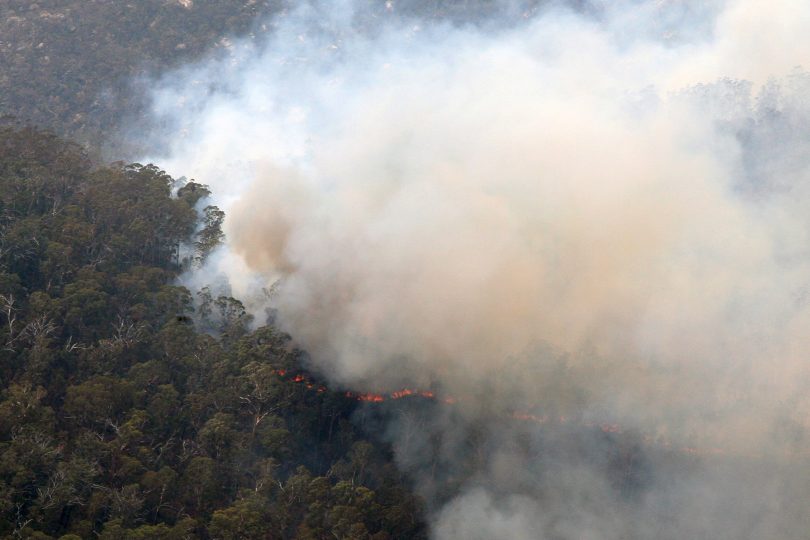
An aerial closeup of a section of the fire front of the Orroral Valley fire in Namadgi National Park, taken on 29 January. Photo: Supplied.
“They’re out in the open so it’s critical to get on top of the ferals as quickly as possible,” he said.
While 80 per cent of the park has been burnt, Mr Fraser is hopeful about its recovery, with reports suggesting the burn was patchy and that areas like gullies were spared from the flames meaning animals could find some refuge.
Mr Fraser was surprised in 2003 at how many small animals survived in damp patches underneath logs and rocks, and it is also becoming more evident how important wombat burrows are as fire refuges.
Still, we can expect huge areas of burnt understorey and largely defoliated, but not necessarily, dead trees.
Eucalypts will use epicormic growth (shoots from their trunk) to keep the tree going until the canopy is restored, while other plants such as ferns, shrubs and trees will sprout from buds under the ground, and others will drop seeds.
Whether the landscape has been irrevocably changed after two big fires so close together is not known.
“There has never been in European experience in this part of the world two very intense fires in the snow gums within that period of time or in alpine ash forest either,” Mr Fraser said.
“In the woodlands and the drier forests and grassy valleys, I don’t think there’s going to be much change.”
But it will depend on how intensely the land burned, Mr Fraser said.
“One of the things we do have an obligation to do is to learn from it. And I have no doubt Parks and Conservation will be doing that, monitoring what happens, and only then we will be able to answer that.”












